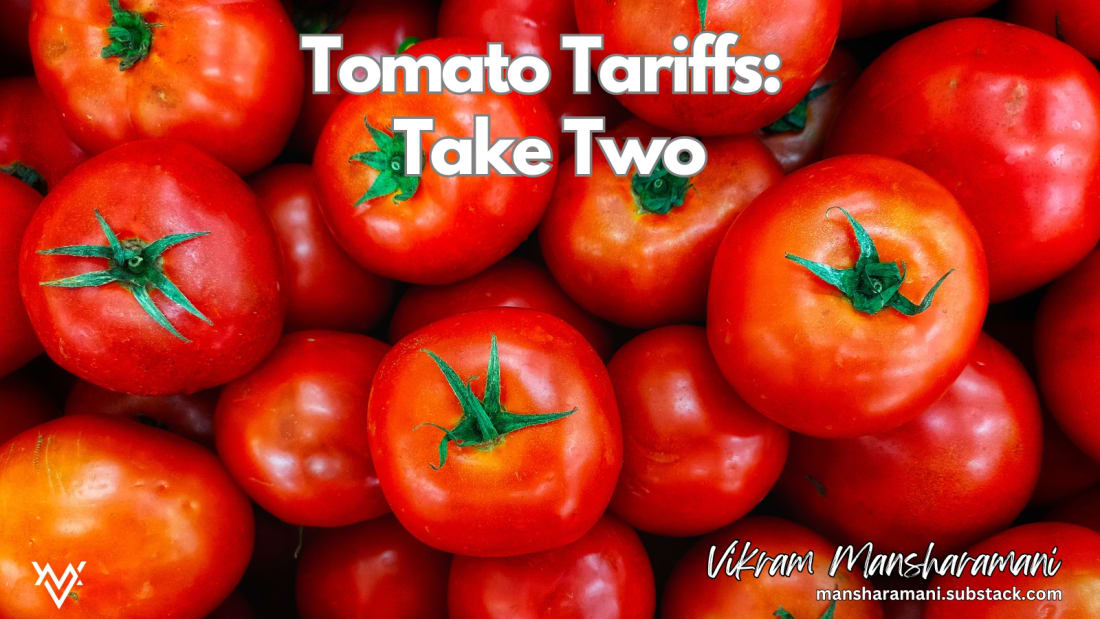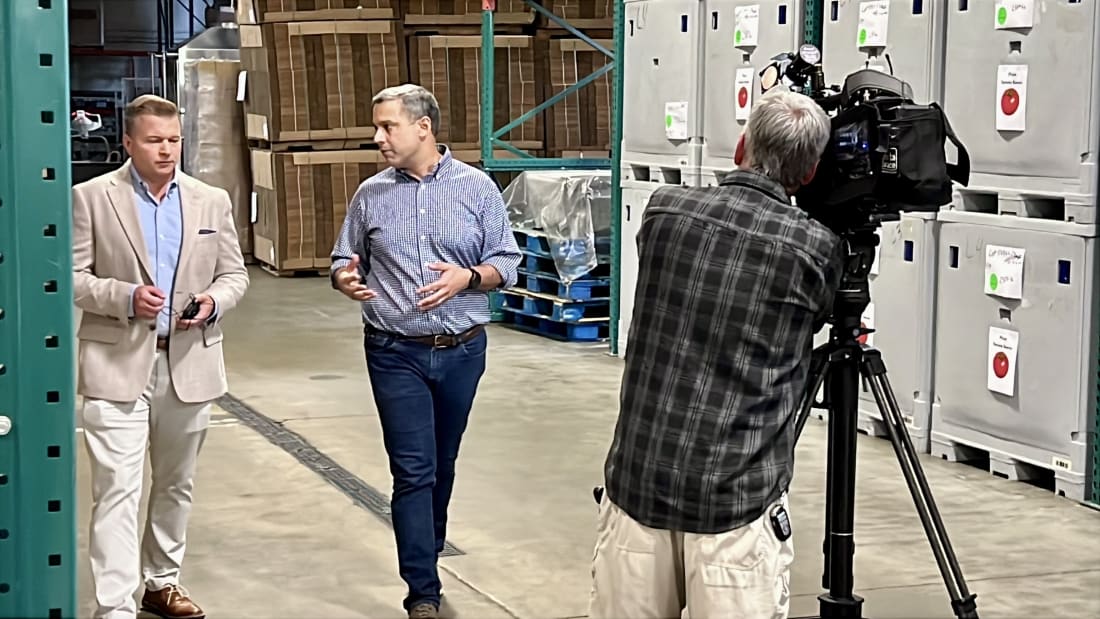|
 |
As the founder and chief executive of a frozen pizza manufacturer, I closely watch how global events can impact my business. Unsurprisingly, the trade war has been a particular area of my focus. And when the possibility of tomato tariffs arose in April, I did what I have long advised businesses to do when navigating uncertainty: think about scenarios and how the future may unfold, contemplating (before anything happens) how potential developments might impact your business. Then come up with anticipated responses for each scenario.
Back in May, I wrote about the possibility of the U.S. imposing tariffs on imports from Mexico, including tomatoes. This week saw the realization of that possibility when the U.S. Department of Commerce announced sweeping new duties on Mexican products. Imports of tomatoes from Mexico are now subject to a 17 percent tariff.
Here at Goodwell Foods, we pride ourselves on making American products, with American ingredients, for American consumers. We have spent time analyzing our supply chain, looking for vulnerabilities, and making changes or building redundancies to reduce risk and increase our resilience to shocks.
As you can imagine, pizza manufacturing requires a lot of tomatoes. In fact, at Goodwell, we use almost one million pounds of tomato sauce every year. And it takes six million tomatoes to make this sauce. Clearly, then, tomato tariffs will have a dramatic impact on my business, correct? It’s obviously going to increase prices and hurt my margins, right?
Maybe. Maybe not.
I recently spoke with a local TV station on this very topic. The fact of the matter is, our tomato sauce is made in California, with tomatoes grown in California. Given these tomatoes are not subject to tariffs, there should be no direct impact on my sauce availability or pricing.
But it’s not that simple. You see, most of the tomatoes consumed in the United States are used for salsa and ketchup. Salsa-makers tend to use Mexican tomatoes, as do some ketchup manufacturers (Heinz is a notable exception), while pasta and pizza sauces are mostly made from tomatoes from the Golden State. So though it’s true that Mexico holds 70% of the U.S. tomato market, California accounts for 90% of all processed tomatoes.
As prices rise for those companies that use Mexican tomatoes, they may look to source their tomatoes from domestic supply, and that increased demand against a static supply would likely increase prices. But that’s only if supply remains fixed, which is very unlikely. As I have often said, the best solution to high prices, is…high prices. Higher prices incentivize more supply, which in the long run will bring down prices.
Florida is one place where that might happen. The Florida Tomato Exchange (FTE) – whose member companies account for 90% of all of the tomatoes grown in Florida – has been a vocal opponent of Mexican imports. According to the FTE, Florida and Mexico peak growing seasons overlap, and the NAFTA trade deal resulted in hundreds of growers being put out of business and the Florida tomato industry being cut in half. It will take some time to build back that capacity, but higher prices might encourage investment and expansion.
Innovation and adaptation will also help. While most U.S. tomatoes are grown in fields, Mexico uses greenhouses. In fact, according to the USDA, over the past 20 years, greenhouse grown tomatoes have expanded from 14% of imports to 60% today. Domestic greenhouse use has grown somewhat in the same time span, but still only accounts for 12% of all such tomatoes. Making investments and expanding U.S. greenhouse capacity can extend growing seasons and boost yields, shortening the amount of time it would take to increase domestic supply.
And don’t discount Americans taking matters into their own hands. Earlier this year when egg prices soared, I wrote about Granite Staters raising their own chickens and selling eggs to their neighbors; one couple even rented their chickens out! The same phenomena could play out with tomatoes, which have a lower barrier to entry than chickens. A local greenhouse in Cincinnati is selling tomato plants and offering to teach customers how to tend them; it estimates that a $4 plant could yield has many as 60 tomatoes.
So, my bet is that any bump in prices will level out in the long run as domestic supply increases. Businesses need to be forward-looking, think in scenarios, and be prepared for all of them, rather than trying to guess which one might come to pass. That’s what we did when the specter of tomato tariffs arose back in April, and as a result, we didn’t panic when tariffs were announced this week.
To thrive (rather than just survive) in times of uncertainty, it’s best to look forward, connect dots, and think in terms of scenarios.
VIKRAM MANSHARAMANI is an entrepreneur, consultant, scholar, neighbor, husband, father, volunteer, and professional generalist who thinks in multiple-dimensions and looks beyond the short-term. Self-taught to think around corners and connect original dots, he spends his time speaking with global leaders in business, government, academia, and journalism. He’s currently the Chairman and CEO of Goodwell Foods, a manufacturer of private label frozen pizza. LinkedIn has twice listed him as its #1 Top Voice in Money & Finance, and Worth profiled him as one of the 100 Most Powerful People in Global Finance. Vikram earned a PhD From MIT, has taught at Yale and Harvard, and is the author of three books, The Making of a Generalist: An Independent Thinker Finds Unconventional Success in an Uncertain World, Think for Yourself: Restoring Common Sense in an Age of Experts and Artificial Intelligence and Boombustology: Spotting Financial Bubbles Before They Burst. Vikram lives in Lincoln, New Hampshire with his wife and two children, where they can usually be found hiking or skiing.
You're currently a free subscriber to Navigating Uncertainty. For the full experience, upgrade your subscription.





